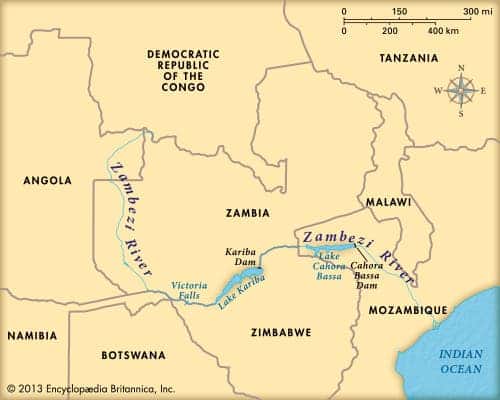
By tapping into the genetic history etched inside our DNA, scientists were able to piece together hints describing our species’ formative years and environment. According to a new study, Homo sapiens emerged in southern Africa and thrived there for 70,000 years before a shift in the climate triggered the first waves of migrations that would eventually spread our species all over the globe.
We got it from mom
“It has been clear for some time that anatomically modern humans appeared in Africa roughly 200 thousand years ago. What has been long debated is the exact location of this emergence and subsequent dispersal of our earliest ancestors,” says study lead Professor Vanessa Hayes from the Garvan Institute of Medical Research and University of Sydney, and Extraordinary Professor at the University of Pretoria.
In order to trace the origin of our species, Hayes and colleagues leveraged the power of mitochondrial DNA (mtDNA), which is stored in the mitochondria — a cell organelle that is responsible for producing chemical energy called ATP (adenosine triphosphate), which is necessary for all biological processes within the body to occur.
Nuclear DNA, which comprises most of our DNA, is inherited equally from both parents; a child will inherit 50% of their nuclear DNA from the mother and the other 50% from their father. On the other hand, mtDNA, which is only a small fraction of our DNA, is almost exclusively passed down from the mother’s side. As of 2018, we now know that mtDNA can sometimes be passed down from the father’s side too.
In humans, the mtDNA is in the form of a circle that contains approximately 16,500 nucleotide base pairs of DNA. In contrast, the DNA in the nucleus is divided into 46 linear chromosomes (23 from each of our parents) that have an average length of more than 200 million base pairs.
Since mtDNA changes very gradually over time, it can act as a reliable time capsule that can be used to extract all sorts of information about our ancestral mothers.
The researchers drew blood samples from over 1,000 living southern Africans to establish a comprehensive catalog of modern human’s earliest mitogenomes from the so-called ‘L0’ lineage. In human mitochondrial genetics, L is the mitochondrial DNA macro-haplogroup that is at the root of the anatomically modern human (Homo sapiens) mtDNA phylogenetic tree. People who are part of this macro-haplogroup are the living descendants of the oldest human ancestors.

This genetic data was overlaid with timeline, ethnolinguistic and geographic frequency distribution data, as well as climatic reconstructions from various periods, revealing that the earliest humans emerged in the Makgadikgadi–Okavango palaeo-wetland of southern Africa, just south of the Zambezi River, in northern Botswana. The L0 timeline reconstruction suggests that this maternal lineage emerged about 200,000 years ago.
“We merged 198 new, rare mitogenomes to the current database of modern human’s earliest known population, the L0 lineage. This allowed us to refine the evolutionary tree of our earliest ancestral branches better than ever before,” says first author Dr Eva Chan from the Garvan Institute of Medical Research, who led the phylogenetic analyses.
A welcoming homeland… but the grass is always greener on the other side
According to Andy Moore, a geologist at Rhodes University who investigated many archaeological, fossils, and geological features from the area, the homeland of our oldest maternal lineage was the perfect environment for life to thrive. It used to be the home to Africa’s largest lake system, Lake Makgadikgadi.
Shifts in the underlying tectonic plates had caused the lake to drain many thousands of years prior to the emergence of modern humans. This led to the formation of vast wetlands, which are some of the most optimal ecosystems for harboring life.
The newly refined evolutionary timeline suggests that modern humans lived in this stable environment for around 70,000 years. Simulations of the changes in the slow wobble of Earth’s axis revealed changes in the amount of solar radiation that hit southern Africa, causing shifts in rainfall.
“These shifts in climate would have opened green, vegetated corridors, first 130 thousand years ago to the northeast, and then around 110 thousand years ago to the southwest, allowing our earliest ancestors to migrate away from the homeland for the first time,” co-corresponding author Professor Axel Timmermann, Director of the IBS Center for Climate Physics at Pusan National University, said in a statement.
This fits perfectly with the genetic data that shows a divergence in the earliest maternal sublineages, indicating a migration that occurred out of the homeland between 130,000 and 110,000 years ago.
“The first migrants ventured northeast, followed by a second wave of migrants who travelled southwest. A third population remained in the homeland until today,” Hayes explained.
“In contrast to the northeasterly migrants, the southwesterly explorers appear to flourish, experiencing steady population growth,” says Professor Hayes. The authors speculate that the success of this migration was most likely a result of adaptation to marine foraging, which is further supported by extensive archaeological evidence along the southern tip of Africa.
“These first migrants left behind a homeland population,” remarks Professor Hayes. “Eventually adapting to the drying lands, maternal descendants of the homeland population can be found in the greater Kalahari region today.”
Writing for The Atlantic, science journalist Ed Young says that Hayes’ conclusions could be far-fetched — at least, what leading scientists he reached out thought.
“It ignores a swath of evidence supporting an older origin for our species,” said Eleanor Scerri, an archaeologist who studies human origins at the Max Planck Institute for the Science of Human History.
“The conclusions are far-fetched and very much overstated,” added Carina Schlebusch, a geneticist at Uppsala University who specializes in southern Africa. “It tells us very little about human origins as a whole. It only tells us about the origin of a very small part of the human genome, and nothing more.”
In his article, Young wrote:
“In 2017, researchers described 315,000-year-old bones from a Moroccan cave called Jebel Irhoud that are the oldest Homo sapiens fossils ever found. Shortly after, a 180,000-year-old jawbone from the Misliya cave, in Israel, showed that humans had ventured out of Africa far earlier than suggested. Just this year, Harvati announced that a 210,000-year-old skull from Apidima Cave, in Greece, also belonged to Homo sapiens. All of this suggests that Homo sapiens not only existed but spread far and wide before the homeland period that Hayes defines. Complex stone tools support this idea: They’ve been found at sites that are about 300,000 years old, in locations as diverse as Morocco, Kenya, and South Africa.”
“Based on such finds, many scientists have abandoned the simple idea that humanity originated in any one part of Africa.”
In other words, it would seem that this study is far from the last word on the matter of our species’ cradle.
The findings appeared in the journal Nature.



